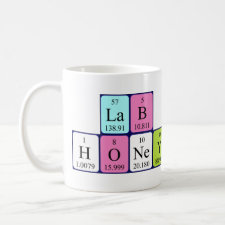
Authors: Chao MR, Hu CW, Chen JL
Article Title: Comparative syntheses of tetracycline-imprinted polymeric silicate and acrylate on CdTe quantum dots as fluorescent sensors.
Publication date: 2014
Journal: Biosensors and Bioelectronics
Volume: 61
Page numbers: 471-477.
DOI: 10.1016/j.bios.2014.05.058
Alternative URL: http://www.sciencedirect.com/science/article/pii/S095656631400400X
Abstract: The amphoteric drug molecule tetracycline, which contains groups with pKa 3.4-9.9, was used as a template for conjugating molecularly imprinted polymers (MIPs) and as a quencher for CdTe quantum dot (QD) fluorescence. Two MIP-QD composites were synthesized by a sol-gel method using a silicon-based monomer and a monomer linker between the MIP and QD, i.e., tetraethoxylsilane/3-mercaptopropyltriethoxysilane (MPS) and tetraethoxylsilane/3-aminopropyltriethoxysilane (APS). Another MIP-QD composite was synthesized by the chain-growth polymerization of methacrylic acid (MAA) and an allyl mercaptan linker. The prepared MIP-QDs were characterized by FTIR and SEM and utilized at 0.33 mg/mL to determine the tetracycline content in phosphate buffers (pH 7.4, 50 mM) through the Perrin and Stern-Volmer models of quenching fluorometry. The Perrin model was applied to tetracycline concentrations of 7.4 μM-0.37 mM for MIP-MPS-QD, 7.4 μM-0.12 mM for MIP-APS-QD, and 7.4 μM-0.10 mM for MIP-MAA-QD (R2=0.9988, 0.9978, and 0.9931, respectively). The Stern-Volmer model was applied to tetracycline concentrations of 0.12-0.37 mM for MIP-APS-QD (R2=0.9983) and 0.10-0.37 mM for MIP-MAA-QD (R2=0.9970). The detection limits were 0.45 μM, 0.54 μM, and 0.50 μM for MIP-MPS-QD, MIP-APS-QD, and MIP-MAA-QD, respectively. Equilibrium times, differences between imprinted and nonimprinted polymers, and MIP-QD quenching mechanisms were discussed. Finally, specificity studies demonstrated that MIP-MAA-QD exhibited optimal recoveries of 96% from bovine serum albumin (n=5, RSD=3.6%) and 91% from fetal bovine serum (n=5, RSD=4.8%)
Template and target information: tetracycline
Author keywords: Molecularly imprinted polymers, polyacrylate, sol-gel, Tetracycline, quantum dot



Join the Society for Molecular Imprinting

New items RSS feed
Sign-up for e-mail updates:
Choose between receiving an occasional newsletter or more frequent e-mail alerts.
Click here to go to the sign-up page.
Is your name elemental or peptidic? Enter your name and find out by clicking either of the buttons below!
Other products you may like:
 MIPdatabase
MIPdatabase









